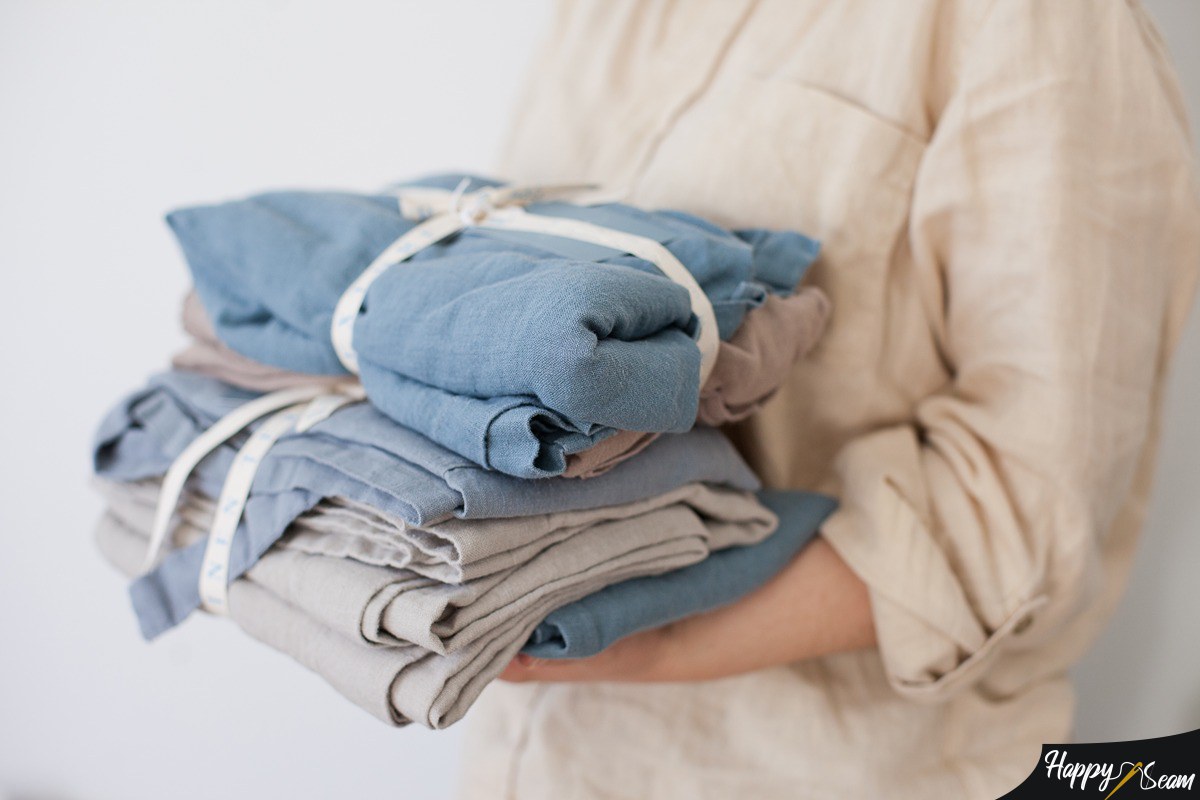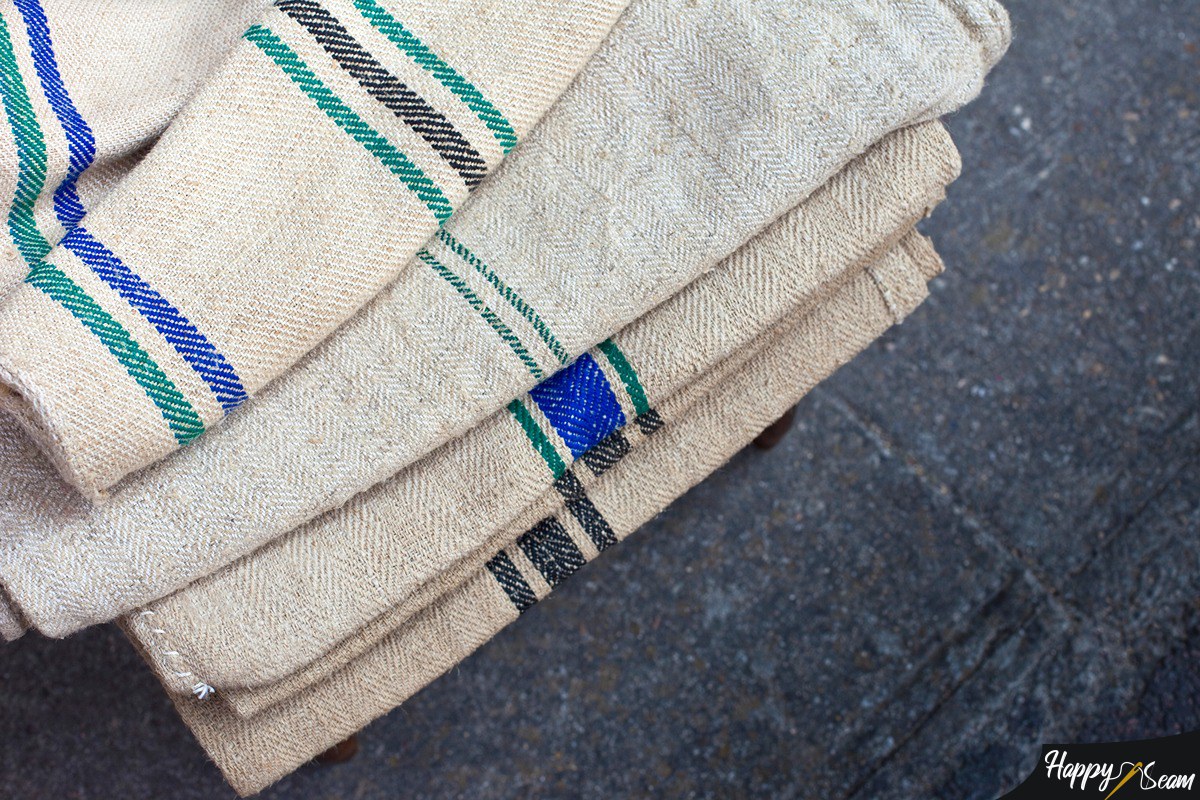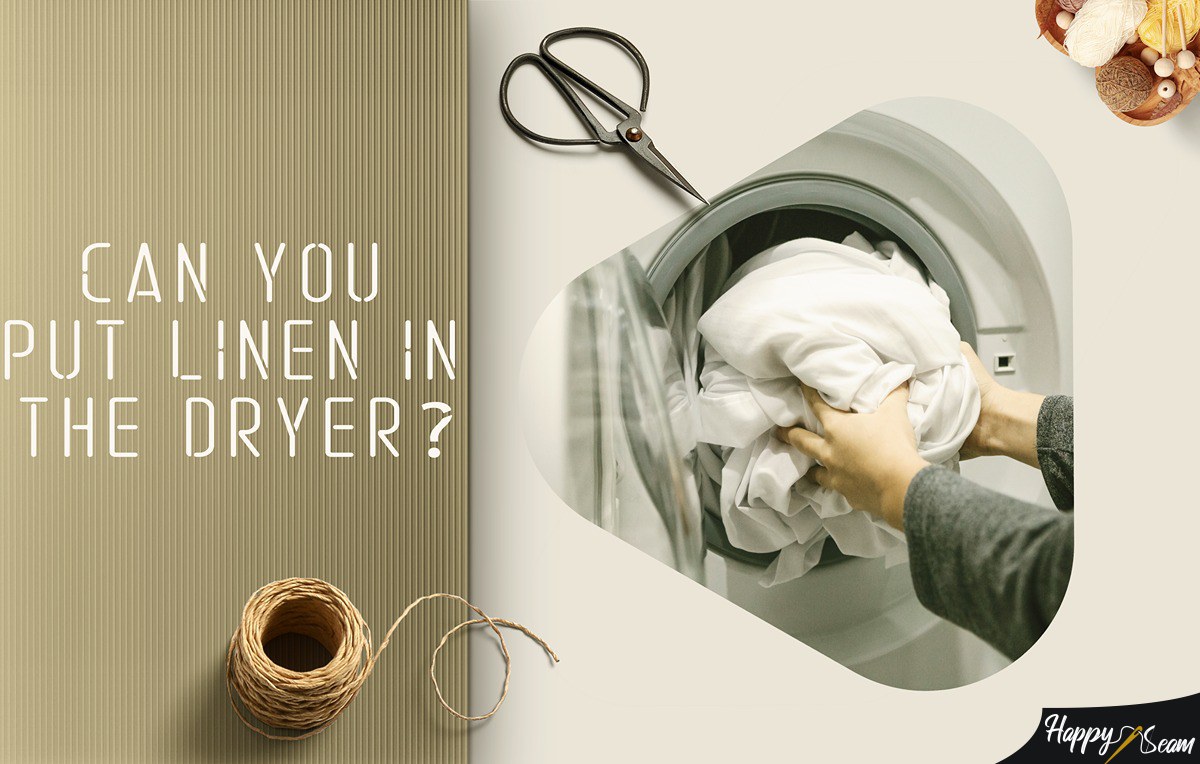Linen is a great soft fabric that provides amazing comfort and elegance. But it’s also known for its ability to naturally shrink, especially, because of washing.
If you have anything linen, from bedding to shirts and pants, I’m sure you’ve asked yourself what the best way to care about linen is. And a great follow-up question is – Can you put linen in the dryer?
Key Takeaways
- Linen is a great and effortlessly cool material that is comfortable and durable.
- Any material that is a blend that consists of mostly linen is called ‘linen’
- Linen materials such as clothes and bedding don’t require as much care as people think.
- You should make sure to carefully look at the tags of your linen items, though, as some might be more delicate than others
- Don’t apply too much heat on linen materials as they are naturally more prone to shrinkage
Can Linen Be Put In The Dryer?

The short answer is yes, but only if it’s done responsibly. Linen is a very delicate material. This means that you have to take proper care of it and be gentle when washing and drying this material.
Linen is a material that shrinks to 3% when washing, so making sure it doesn’t shrink a lot is essential to keeping your linen fresh, new, and good-looking.
Whether it’s bedding or linen clothes we’re talking about, you have to pay attention to what their tags say about their washing instructions. Always be careful and read about the tag on the product about what to do and what not to do. This is important as some linen fabric can be washed and dried a lot more carelessly than others.
I would personally vouch for letting your linen dry naturally, however, if you tumble dry linen at a cool to medium temperature I’m sure your linen is going to be safe and sound.
What is linen?
To know how to properly take care of our linen garments, as well as to know if we can safely put them in the dryer, we first need to know what linen is.
Therefore, we can introduce linen as an extremely durable and quality material that is one of the oldest materials used worldwide, first found in Mesopotamia.
Linen is made out of flax plant fiber. Its natural fibers make it absorbent, valuable, and faster drying than cotton. This makes linen a great choice for any of your garments.
The downside of this light material is that it is very prone to wrinkles and kinks because of its light weight. Linen is a textile that is a perfect choice for the warm weather of summertime, as it doesn’t trap any temperature, instead, offers breathability and comfort.
Even though, it’s a loose term that contains hemp, cotton, silk, and other materials that aren’t made out of the flax plant. Any mix of materials that is predominantly linen is usually referred to as just ‘linen’.
How to care about your linen garments
Linen isn’t as specific as most people think when we’re talking about taking precautions and measures to ensure its safety during washing and cleaning. It’s a durable material that is soft, lightweight, and breathable.
If you have to take care of your linen garments, whether it is washing them, drying them, ironing them, or storing them, you should read the care instructions and use the coldest water option possible.
How to wash linen?
A great question to ask when it comes to linen, firstly, is how you wash it. The answer is fairly simple. Linen can be washed by hand or in the washing machine.
When we put linen in the washing machine we need to remember that linen shrinks when in contact with high temperatures. This means that the water temperature we use should be lukewarm at best, as heat makes it shrink.
It is a pretty delicate and exquisite material, so, keeping it separated from other materials and being turned inside-out when it’s being washed is almost obligatory. Not only this, but we should also separate the different color linens as well.
Another great thing to consider is the kind of detergent you are using. Mild detergent is best when it comes to washing any kind of linen clothing.
Don’t use strong detergents that contain hydrogen peroxide and don’t use bleach on your linen clothing or beddings.
How to dry linen?
After washing comes drying, and I already said that I personally would let linen dry on its own instead of putting it in the dryer. However, this is not possible always. Sometimes you just want it to be dry quicker, and that is totally reasonable.
If you’re wondering what kind of temperature is suitable for linen. No heat or low heat is the preferable method of drying when it comes to tumble-drying your linen. This is fine for any pre-washed linen article. However, you should still carefully examine the instructions on the given tag of the product.
So, when you’re drying your linen my suggestion is to take it out when it’s not fully dry, but instead kind of damp. Why this should be done to preserve linen from wrinkling up, as drying naturally is obviously a lot better for this “gentle” material.
Should you iron linen garments?
Ironing linen garments is, also, completely fine. Even though ironing your linen garments isn’t needed or necessary, if you can’t stand the creases and you want to iron your linen clothes, you can.
Not ironing your linen products gives a drapey, relaxed feel to them and most people don’t really care if they see a bunch of unavoidable wrinkles on your linen shirt.
That being said, white linen is best ironed from both sides, whereas darker linen should just be pressed on one side and preferably ironed from the inside out.
How to store linen?

When it comes to storing linen it should be kept safe in a dark, cold space. There is no need for any special treatment, as linen is fine on its own. It doesn’t need any special care in its defense against moths and evil insects trying to eat away at its fibers.
Final words
Linen is a great material that doesn’t require as much care as most people think. You can put extra care into making sure your linen is safe, however, it isn’t obligatory.
It is totally safe, especially if it’s pre-washed, to be ironed, put into the washing machine, or in the dryer, as long as cold water or almost no heat is being used.
I have been in the embroidery field for over 10 years. My career first started when I was an apprentice to a local seamstress where I started to learn the basics of garment construction and alterations. That’s where I started to love sewing and began to hone my skills even more.



